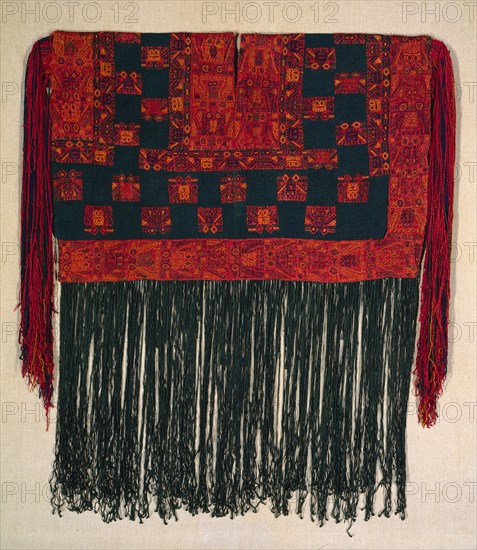
Sujet
Tunic, c. 300 BC-AD 200. Creator: Unknown.
Légende
Tunic, c. 300 BC-AD 200. The brightly dyed wool yarns found in many ancient Peruvian textiles come mainly from alpacas, camelids domesticated and selectively bred to produce long, soft, lustrous fiber. (Llamas are used mainly as pack animals, and slaughtered for meat). The Paracas people from the arid Peruvian coast probably obtained their wool from the highland region to the east, where camelids thrive. The versatility of Paracas textile-makers is demonstrated by the use of two distinct techniques to create the shirt's ornamentation. Around the neck and in the blue field the double-bird motifs are executed in embroidery, but the border strips are carried out in warp-faced plain weave, with multicoloured warps substituted into place to create the pattern.
Crédit
Photo12/Heritage Images/Heritage Art
Notre référence
HRM19G16_295
Model release
NA
Property release
NA
Licence
Droits gérés
Format disponible
7,8Mo (1,3Mo) / 13,0cm x 15,0cm / 1536 x 1771 (300dpi)